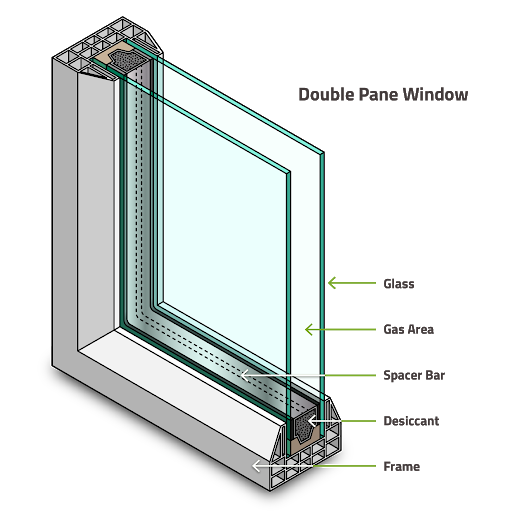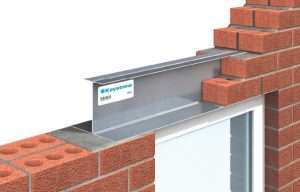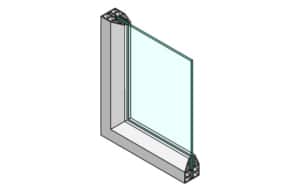The Benefits of Thermal Insulated Windows:
An Energy-Efficient Solution for Enhanced Comfort
One of the most effective ways to ensure a cozy, energy-efficient home is to install thermal insulated windows. These ingenious inventions have two or more panes of glass with an insulating air gap in between. They’re designed to keep your home warm during winter and cool during summer, reducing your reliance on artificial heating and cooling systems. But how exactly do they work? And what are the advantages of using them in your home? This post will answer these questions and provide some useful tips on how to choose the right thermal insulated windows for your needs.
What Are Thermal Insulated Windows?
Thermal insulated windows, also known as energy-efficient windows, are specially designed windows that provide better insulation and help to reduce energy consumption in homes and buildings. These windows are constructed using advanced technologies and materials to minimize heat transfer between the interior and exterior of a structure. In this section, we will explore the benefits, features, and types of thermal insulated windows.
Benefits of Thermal Insulated Windows
Thermal insulated windows offer a range of benefits that make them a popular choice for homeowners and businesses alike. Here are some key advantages:
- Energy Savings: One of the primary benefits of thermal insulated windows is their ability to save energy. These windows are designed to minimize heat loss during winter and reduce heat gain during summer, leading to lower heating and cooling costs.
- Improved Comfort: By preventing drafts and minimizing temperature variations near windows, thermal insulated windows enhance comfort levels inside a building. They help maintain a consistent indoor temperature, ensuring a cozy environment year-round.
- Noise Reduction: Another significant advantage of thermal insulated windows is their ability to reduce outside noise. The multiple layers of glass and insulating materials act as a barrier, minimizing sound transmission and creating a quieter indoor space.
- UV Protection: Thermal insulated windows often come with specialized coatings that block harmful ultraviolet (UV) rays. This helps protect furniture, flooring, and other interior elements from fading and damage caused by prolonged sun exposure.
Features of Thermal Insulated Windows
To understand thermal insulated windows better, it’s important to know the key features that contribute to their energy efficiency. Here are some notable features:
- Double or Triple Pane Glass: Thermal insulated windows typically feature two or three panes of glass with a layer of insulating gas, such as argon or krypton, sandwiched between them. This configuration enhances insulation by reducing heat transfer through the window.
- Low-E Coatings: Many thermal insulated windows are coated with a low-emissivity (low-E) coating. This thin, transparent layer helps reflect heat back into the room while allowing natural light to pass through. It also prevents excessive heat gain in summer and heat loss in winter.
- Insulating Frames: The frames of thermal insulated windows are often made of materials with high thermal resistance, such as vinyl, fiberglass, or wood. These frames provide additional insulation and reduce the transfer of heat or cold from the exterior to the interior.
Types of Thermal Insulated Windows
Thermal insulated windows come in various styles and designs to suit different architectural preferences and energy efficiency needs. Here are some common types:
- Double-Hung Windows: These windows have two vertically sliding sashes that can be opened from both the top and bottom. Double-hung windows are versatile, easy to clean, and provide excellent ventilation control.
- Casement Windows: Casement windows are hinged on one side and open outward like a door. They offer unobstructed views, superior air sealing, and are an ideal choice for areas with high wind exposure.
- Slider Windows: Slider windows have horizontally sliding sashes that glide smoothly along a track. They are easy to operate, provide ample natural light, and are a popular choice for contemporary homes.
- Awning Windows: Awning windows are hinged at the top and open outward, creating an awning-like effect. They allow for ventilation even during light rain and are commonly used in bathrooms and basements.
Benefits of Thermal Insulated Windows
When it comes to choosing windows for your home, there are a multitude of options to consider. One type of window that has been gaining popularity in recent years is thermal insulated windows. These windows are designed to provide numerous benefits that can make a significant difference in your home’s energy efficiency, comfort level, and overall quality of life. In this section, we will explore three key benefits of thermal insulated windows: energy efficiency, noise reduction, and enhanced comfort.
Energy Efficiency
One of the primary advantages of thermal insulated windows is their ability to improve energy efficiency in your home. These windows are constructed with multiple panes of glass separated by an insulating layer, typically filled with air or a special gas like argon. This design helps to reduce the transfer of heat between the interior and exterior of your home, ensuring that your heating and cooling systems don’t have to work as hard to maintain a comfortable temperature.
By minimizing heat loss during the colder months and heat gain during the warmer months, thermal-insulated windows can significantly reduce your energy consumption. This, in turn, can lead to lower utility bills and a smaller carbon footprint. Additionally, the enhanced insulation provided by these windows can help create a more consistent indoor temperature, reducing the need for frequent thermostat adjustments and improving overall comfort.
Noise Reduction
In addition to their energy-saving qualities, thermal insulated windows also offer excellent noise reduction benefits. The multiple layers of glass and insulation within these windows act as a barrier against outside noise, effectively reducing the amount of sound that enters your home.
If you live in a busy urban area or near a loud street, you’ll appreciate the peace and quiet that thermal-insulated windows can provide. The added sound insulation can create a calm and serene living environment, allowing you to relax and enjoy your home without the constant intrusion of external noise. Whether you’re working from home, watching a movie, or simply trying to get a good night’s sleep, the noise reduction benefits of these windows can greatly enhance your quality of life.
Enhanced Comfort
Lastly, thermal insulated windows contribute to enhanced comfort in your home. As we mentioned earlier, these windows help to maintain a more consistent indoor temperature, preventing drafts and cold spots. This means you can enjoy a cozy and comfortable living space all year round, regardless of the weather outside.
In the summer, thermal insulated windows can help to keep your home cooler by blocking out the heat from the sun. In the winter, they keep the cold air at bay, preventing chilly drafts from entering your home. This level of comfort is not only beneficial for your physical well-being but also for creating a welcoming and enjoyable atmosphere for you, your family, and your guests.
How Do Thermal Insulated Windows Work?
Thermal insulated windows, also known as energy-efficient windows, are a popular choice for homeowners seeking to reduce energy consumption and increase comfort in their homes. These windows are designed to minimize heat transfer between the interior and exterior of a building, providing better insulation and helping to maintain a consistent indoor temperature. In this article section, we will explore three key components that make thermal insulated windows so effective: Double Glazing, Low-E Coatings, and Gas Filling.
Double Glazing
One of the primary features of thermal insulated windows is double glazing, also referred to as double-pane or dual-pane glass. This technology involves the use of two glass panes with a layer of air or gas trapped between them. The air or gas acts as an insulating barrier, reducing the amount of heat that can pass through the window.
The double glazing construction creates an additional layer of protection against external temperatures, acting as a buffer to minimize heat transfer. This means that during hot summer months, less heat from outside will enter the building, and during cold winter months, less heat will escape from indoors. The result is a more comfortable living space and reduced reliance on heating or cooling systems.
Low-E Coatings
Another crucial element in thermal insulated windows is the application of low-emissivity (Low-E) coatings on the glass surfaces. These coatings are made up of microscopically thin layers of metallic oxides that are virtually invisible to the naked eye. The purpose of Low-E coatings is to selectively reflect or absorb certain wavelengths of energy, such as UV rays or infrared heat.
By controlling the amount of solar radiation that enters a building, Low-E coatings help to regulate indoor temperatures. During summer, these coatings reflect a significant portion of the sun’s heat away from the window, preventing it from heating up the interior. In contrast, during winter, Low-E coatings allow sunlight to pass through the window and warm up the indoor space while minimizing heat loss.
Gas Filling
The space between the double panes in thermal insulated windows is often filled with an insulating gas, such as argon or krypton. These gases are denser than air and provide enhanced insulation properties. When compared to air, these gases reduce convective heat transfer and improve the overall thermal performance of the window.
Argon and krypton gases are non-toxic and non-reactive, making them safe to use in windows. By filling the space between the glass panes with these gases, thermal conductivity is significantly reduced. This means that less heat is conducted through the window, resulting in improved energy efficiency and better insulation.
Choosing the Right Thermal Insulated Windows
When it comes to choosing the right thermal insulated windows for your home, there are several factors to consider. From frame materials to U-Factor and R-Value, as well as window styles, each aspect plays a crucial role in the overall energy efficiency and comfort of your living space.
Frame Materials
- Vinyl: Vinyl frames are popular due to their affordability, low maintenance requirements, and excellent insulation properties. They are resistant to moisture, rot, and termites, making them a durable choice.
- Wood: Wood frames offer a classic and timeless look. They provide good insulation and are customizable in terms of shape and size. However, wood frames require regular maintenance to prevent rotting and warping.
- Fiberglass: Fiberglass frames are known for their strength, durability, and low thermal conductivity. They are resistant to extreme temperatures and are a great choice for areas with harsh weather conditions.
U-Factor and R-Value
The U-Factor and R-Value are two important metrics to consider when evaluating the energy efficiency of thermal insulated windows.
- The U-Factor measures how well a window prevents heat from escaping your home. A lower U-Factor indicates better insulation. Look for windows with a U-Factor below 0.30 for optimal energy efficiency.
- The R-Value measures a window’s resistance to heat flow. A higher R-Value indicates better insulation. Aim for windows with an R-Value of 3 or higher for efficient thermal performance.
Window Styles
Thermal insulated windows come in various styles, each offering different benefits in terms of functionality and aesthetics. Consider the following options:
- Double-Hung Windows: These windows have two vertically sliding sashes that can be opened from both the top and bottom. They provide excellent ventilation and are easy to clean.
- Casement Windows: Casement windows are hinged on one side and open outward using a crank mechanism. They offer unobstructed views and provide a tight seal when closed, minimizing air leakage.
- Sliding Windows: Sliding windows glide horizontally along a track. They are easy to operate and allow for maximum natural light and ventilation.
- Picture Windows: Picture windows are fixed and do not open. They are designed to provide expansive views and maximize natural light.
Installation and Maintenance of Thermal Insulated Windows
Thermal insulated windows offer numerous benefits, from energy efficiency to noise reduction. However, to fully enjoy these advantages, proper installation and regular maintenance are crucial. In this section, we will discuss the proper installation process and the importance of regular cleaning and maintenance for thermal insulated windows.
Proper Installation Process
The installation of thermal insulated windows requires careful attention to detail to ensure maximum performance and longevity. Here are the key steps involved in the installation process:
- Preparation: Before installing the windows, it is essential to measure the openings accurately. This ensures a proper fit and minimizes air leakage. Any existing windows should be thoroughly inspected for damage or decay and repaired if necessary.
- Sealing and Insulation: To prevent air and moisture infiltration, it is important to properly seal and insulate the window frames. This helps maintain a consistent indoor temperature and enhances energy efficiency. High-quality sealants and insulation materials should be used for optimal results.
- Proper Alignment: Installing thermal insulated windows requires precise alignment to ensure a tight seal. Proper alignment also ensures smooth operation when opening and closing the windows. This step requires expertise and attention to detail, so it is recommended to hire a professional installer for best results.
- Weatherproofing: To enhance the windows’ performance and durability, weatherproofing measures should be taken. This includes applying weatherstripping or caulking around the frames to prevent drafts and water infiltration. It is important to choose weatherproofing materials that are compatible with thermal insulated windows.
Regular Cleaning and Maintenance
Regular cleaning and maintenance are essential to keep thermal insulated windows in optimal condition. Here are some important aspects to consider:
- Cleaning: Regular cleaning helps maintain the appearance and functionality of thermal insulated windows. Use a mild, non-abrasive cleaner and a soft cloth or sponge to clean the glass and frames. Avoid using harsh chemicals or abrasive materials that could damage the window surface or its protective coating.
- Inspecting for Damage: Regular inspections can help identify any signs of damage or wear on the windows. Look for cracks, chips, or gaps in the frames, as well as any condensation between the panes of glass. If any issues are detected, it is important to address them promptly to prevent further damage and maintain the windows’ performance.
- Weather Stripping Replacement: Over time, weatherstripping can wear out or become damaged. Damaged weather stripping can compromise the windows’ energy efficiency. Regularly inspect the weatherstripping and replace it if necessary to ensure a proper seal and minimize air leakage.
- Professional Maintenance: While regular cleaning and inspections can be done by homeowners, it is recommended to have professional maintenance performed periodically. Professional maintenance includes more thorough inspections, lubrication of moving parts, and addressing any specific issues or concerns. A professional can also provide guidance on how to extend the lifespan of your thermal insulated windows and maximize their performance.
Common FAQs about Thermal Insulated Windows
Thermal insulated windows have become increasingly popular due to their energy-saving benefits and improved comfort levels in homes. If you’re considering installing thermal insulated windows, you may have some questions in mind. In this section, we will address some of the most common FAQs about thermal insulated windows and provide you with the answers you need to make an informed decision.
How much do thermal insulated windows cost?
When it comes to the cost of thermal insulated windows, several factors come into play. The price can vary depending on the type of window, its size, the materials used, and the complexity of the installation. On average, you can expect to pay between $500 and $1,500 per window, including both the cost of the window itself and the installation. While this may seem like a significant investment, it’s important to consider the long-term energy savings and the improved comfort that thermal insulated windows provide. They can help reduce your heating and cooling costs, making them a worthwhile investment in the long run.
Can thermal insulated windows prevent condensation?
Yes, thermal insulated windows can help prevent condensation. Condensation occurs when warm, moist air comes into contact with a cold surface, causing the moisture to turn into water droplets. Traditional windows often have single-pane glass, which allows for more heat transfer and can lead to condensation issues. However, thermal insulated windows are specifically designed to reduce heat transfer. The insulating materials, such as double or triple-pane glass with a low-emissivity (low-E) coating, create a barrier that helps maintain a consistent temperature on both sides of the window, reducing the likelihood of condensation forming.
Are thermal insulated windows suitable for all climates?
Yes, thermal insulated windows are suitable for all climates. Whether you live in a hot and humid environment or a cold and snowy one, thermal insulated windows can provide significant benefits. In hot climates, they help keep the heat out, reducing the need for excessive air conditioning and lowering energy bills. In cold climates, they help retain heat inside your home, keeping you warm and cozy during the winter months. The insulating properties of thermal windows make them effective in both extreme cold and extreme heat, making them a versatile choice for any climate.
Are Thermal Insulated Windows Worth the Investment?
Thermal insulated windows have gained significant popularity in recent years, as homeowners seek ways to improve energy efficiency and reduce utility costs. However, before making the investment, it’s important to understand whether thermal insulated windows are really worth it. In this article, we will explore the benefits and considerations of thermal insulated windows to help you make an informed decision.
Benefits of Thermal Insulated Windows
- Energy Efficiency: One of the primary advantages of thermal insulated windows is their ability to enhance energy efficiency in your home. These windows are designed with multiple panes of glass separated by an insulating gas or air-filled space. This configuration helps to reduce heat transfer, preventing cold air from entering your home during the winter and hot air from infiltrating during the summer. By minimizing heat exchange, thermal insulated windows can contribute to maintaining a comfortable indoor temperature while reducing the need for excessive heating or cooling.
- Cost Savings: By improving energy efficiency, thermal insulated windows can lead to substantial cost savings over time. Since these windows help to regulate indoor temperature, your heating and cooling systems won’t need to work as hard to maintain a comfortable environment. As a result, you can expect to see a reduction in your energy bills, especially during extreme weather conditions. While the initial investment in thermal insulated windows may be higher than traditional windows, the long-term savings can make them a financially wise choice.
- Noise Reduction: Another benefit of thermal insulated windows is their ability to minimize outside noise. The double or triple pane design, along with the insulating gas or air-filled space, acts as a barrier to block unwanted sounds from entering your home. This feature is particularly advantageous if you live in a noisy neighborhood or near a busy road. The improved acoustic insulation offered by thermal insulated windows can contribute to a quieter and more peaceful living environment.
Considerations for Thermal Insulated Windows
- Upfront Cost: As mentioned earlier, the initial cost of thermal insulated windows is typically higher than traditional windows. However, it’s essential to consider this as a long-term investment rather than a short-term expense. While you may need to allocate a larger budget upfront, the energy savings and improved comfort can ultimately offset the initial investment.
- Window Replacement: If you’re considering thermal insulated windows, it’s important to evaluate the condition of your existing windows. If the frames are deteriorating or if there are significant drafts, it may be a good time to replace your windows with thermal insulated ones. However, if your current windows are still in good condition, retrofitting them with thermal insulation films or adding weatherstripping can be a more cost-effective solution.
- Climate Considerations: The benefits of thermal insulated windows can vary depending on the climate you live in. If you reside in an area with extreme temperatures, such as very hot summers or bitterly cold winters, thermal insulated windows can make a noticeable difference in energy efficiency. On the other hand, if you live in a mild climate, the energy savings may not be as significant, and the return on investment might take longer.
Conclusion
Thermal insulated windows are a valuable investment for any homeowner. They offer numerous benefits such as energy efficiency, noise reduction, and increased comfort. By preventing heat transfer and reducing drafts, these windows help to lower energy bills and create a more sustainable living environment. Additionally, the soundproofing properties of thermal insulated windows contribute to a quieter and more peaceful indoor space. Whether you live in a cold climate or simply want to improve the insulation of your home, installing thermal insulated windows is a smart choice.






